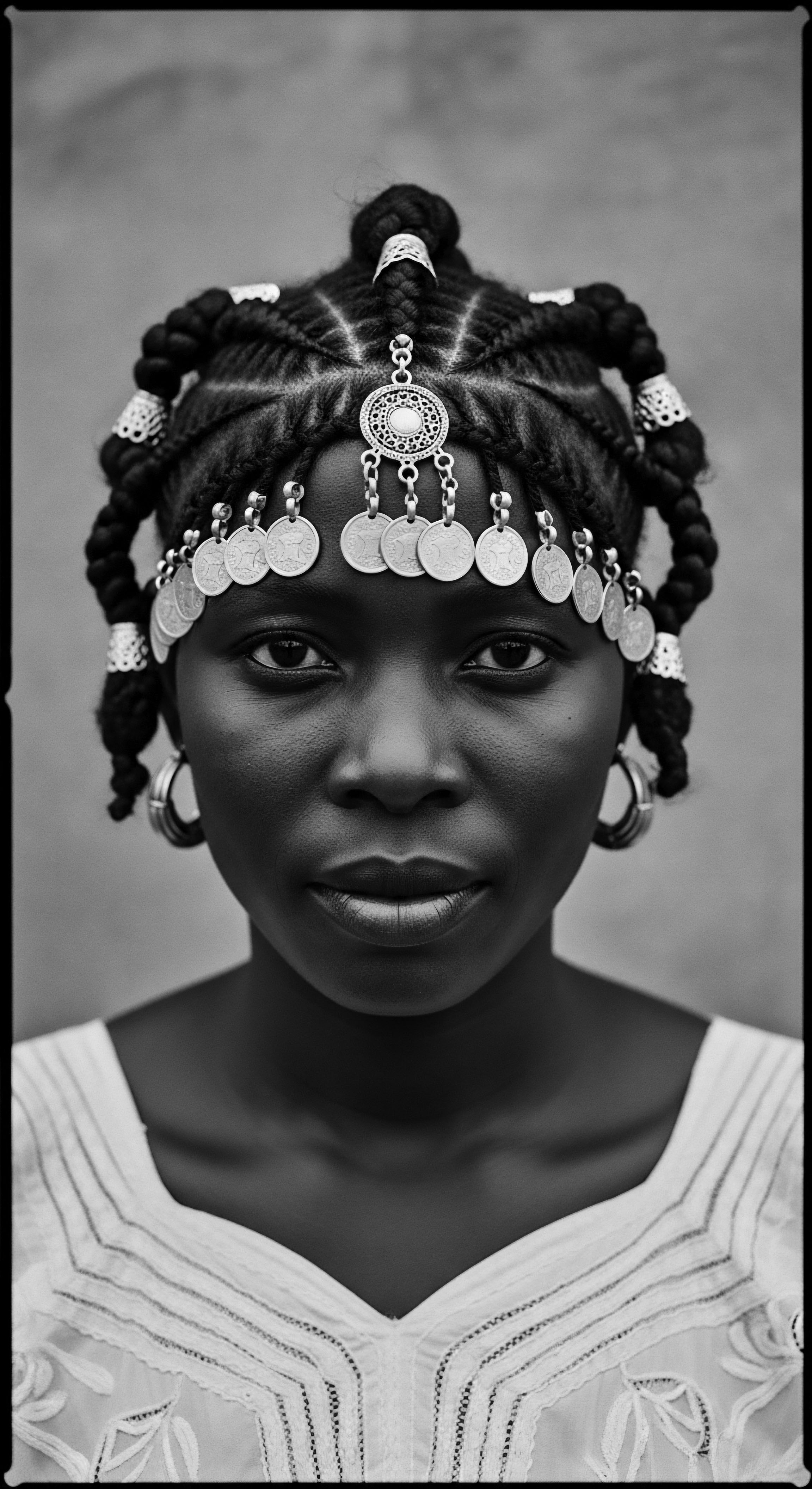
Roots
To stand on the ground of heritage, to truly understand the ways of old, we must listen closely to the whispers carried on the wind—the stories of our strands. For those with textured hair, the journey of care is a profound inheritance, a living archive inscribed in every coil and curl. It is not a tale of fleeting trends but of enduring wisdom, passed hand to hand, generation to generation. At the very heart of this ancient wisdom lies the deep connection between ancestral oils and the protective hairstyles that have shielded and celebrated textured hair for millennia.
This is a story of resilience, ingenuity, and a sacred bond between the earth’s offerings and the crowns they nourished. It invites us to remember, to honor, and to find our own place within this unbroken lineage of care.

Understanding the Textured Strand’s Unique Design
The intrinsic nature of textured hair, with its unique elliptical cross-section and curled follicle, sets it apart. This structure, a beautiful adaptation to diverse climates and environments over countless centuries, dictates its particular needs. Unlike straight hair, the natural oils produced by the scalp struggle to travel down the curved path of a coiled strand. This inherent characteristic often results in dryness, a propensity for tangling, and a greater susceptibility to breakage from manipulation and environmental exposure.
This biological reality, this distinct morphology, explains precisely why our ancestors, keenly observant of their surroundings and the necessities of their bodies, sought external solutions for hydration and protection. The wisdom of oiling was not a mere cosmetic whim; it was a fundamental response to the very architecture of the hair itself.
Ancestral oil use provided vital lubrication and moisture for textured hair, countering its inherent dryness and supporting protective styles.
Consider the hair shaft. Each strand is a complex arrangement of cuticle, cortex, and medulla. For textured hair, the cuticle layers, which serve as the hair’s outer shield, may lift more readily at the curves of the strand, allowing moisture to escape. This makes the hair more vulnerable.
Ancient practitioners, through observation and inherited knowledge, recognized this need for a barrier, for something that could seal in hydration and provide a slippery surface to reduce friction. Oils, with their rich fatty acid profiles, were the perfect answer, creating a protective film that both sealed moisture within the hair shaft and smoothed the cuticle. This understanding forms a core part of the heritage of textured hair care, a practice deeply rooted in an elemental biology of the strand.
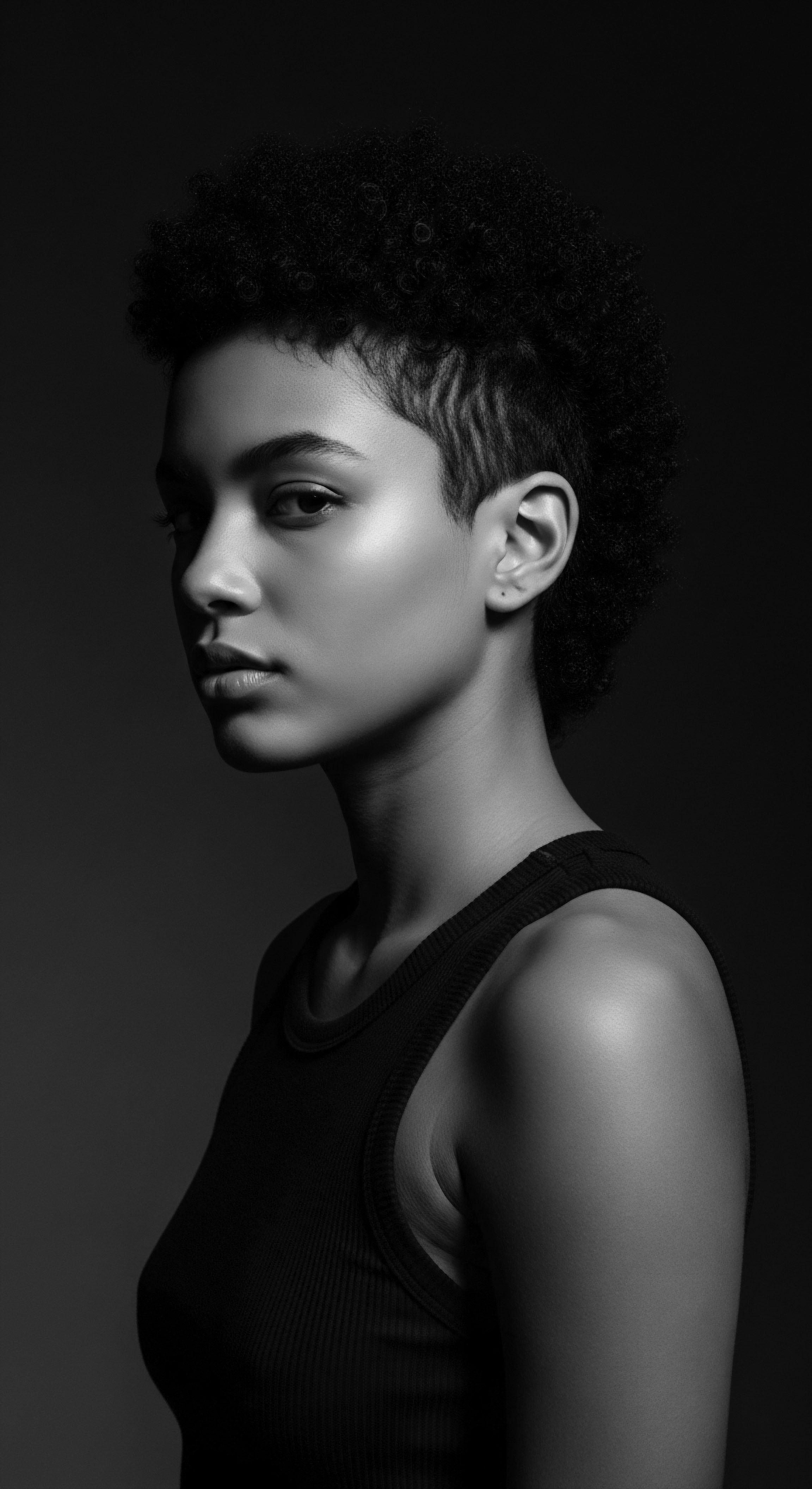
The Earliest Marks of Hair Oiling
Long before the dawn of modern chemistry, our forebears around the globe instinctively recognized the remarkable properties of plant-derived oils and butters. The historical markers of hair oiling reach back thousands of years. From ancient Egypt, where archaeologists found women buried with elaborate hair extensions and evidence of hair care practices, to the vibrant communities across West, Central, and Southern Africa, the use of oils was deeply embedded in daily life and ritual. These were not casual applications; they were considered sacred, practical, and often communal endeavors.
The earliest records hint at a profound connection between these plant resources and self-care. In pre-colonial Africa, hair styling was a significant identifier—it conveyed tribal affiliation, social standing, marital status, and spiritual connection. Elaborate cornrows, threading, and various braiding techniques required meticulous preparation and conditioning.
Natural butters and oils were essential to these processes, providing moisture and pliability for shaping and maintaining styles. This practice ensured not only the beauty of the hair but also its health and longevity under diverse climatic conditions.
| Traditional Source Shea Butter (Vitellaria paradoxa) |
| Regional Ancestral Use West and East Africa, cherished for deep conditioning and sun protection, providing valuable income for women's cooperatives. |
| Traditional Source Red Palm Oil (Elaeis guineensis) |
| Regional Ancestral Use West and Central Africa, revered for its vibrant color and ability to provide shine, moisture, and environmental protection. |
| Traditional Source Coconut Oil (Cocos nucifera) |
| Regional Ancestral Use Widely used across Africa and parts of the diaspora, recognized for its deep penetration and anti-bacterial qualities. |
| Traditional Source Baobab Oil (Adansonia digitata) |
| Regional Ancestral Use Central and Southern Africa, rich in omega fatty acids and Vitamin C, used for moisture and skin repair. |
| Traditional Source These oils, drawn directly from the earth, formed the cornerstone of ancestral hair care, reflecting an intuitive understanding of nature's gifts. |
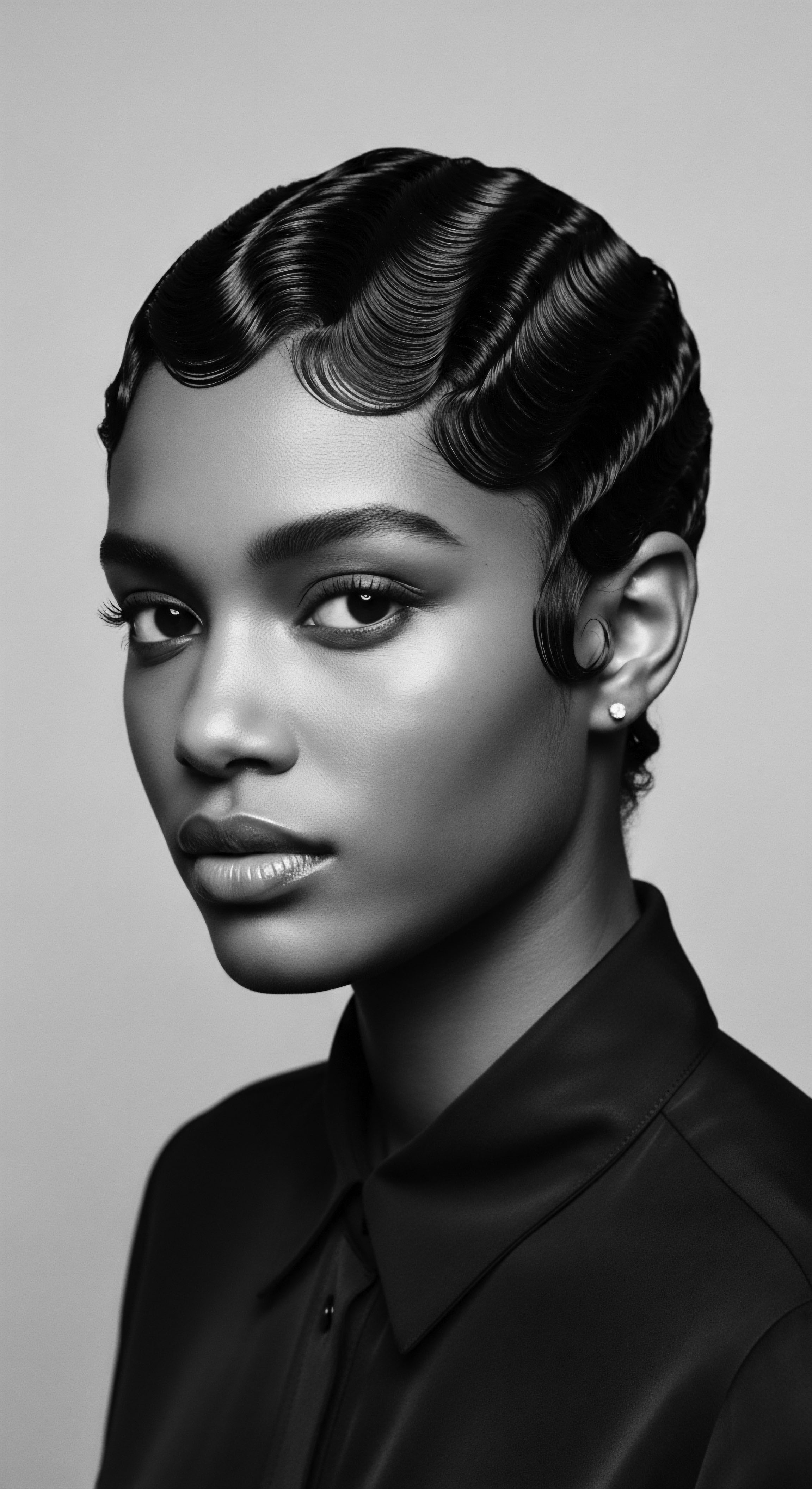
Ritual
The application of ancestral oils to textured hair was rarely a solitary, utilitarian act. It transpired as a ritual , a tender gathering, a moment where generations connected, knowledge was imparted, and identities were affirmed. This communal aspect, the shared breath and quiet conversations over a child’s head, created a powerful resonance that echoes through our heritage today. The very act of hair preparation became a ceremonial space, solidifying bonds and transmitting ancient wisdom.

Ancestral Hands and Shared Moments
Across many African communities, the process of caring for hair was, and often remains, a profoundly social activity. It transcended mere grooming. Mothers, grandmothers, sisters, and friends would gather, their hands working together on intricate styles like cornrows , Fulani braids , and Bantu knots . These were not quick tasks; the creation of such elaborate designs could span hours, even days.
During this time, stories were told, histories recounted, and the quiet lessons of life shared. The oils used were integral to this process, warming in palms, their earthly scents mingling with the air, softening the hair to make it pliable for braiding, and sealing the moisture within the tightly wound strands.
The physical benefits of these practices were clear ❉ oils provided slip, making detangling less damaging and reducing friction during styling. They coated the hair, forming a protective barrier against the elements—the harsh sun, dry winds, or the demanding routines of daily life. This was especially important for styles meant to last for extended periods, preserving the hair from constant manipulation.
Red palm oil, for instance, used extensively in West and Central Africa, applied directly to hair, provided shine, moisture, and protection from sun exposure. Its rich carotene content (Vitamin A) added to its reputation as a guardian of the hair’s vitality.
Beyond physical benefits, ancestral oiling practices served as profound moments of cultural transmission and community bonding.
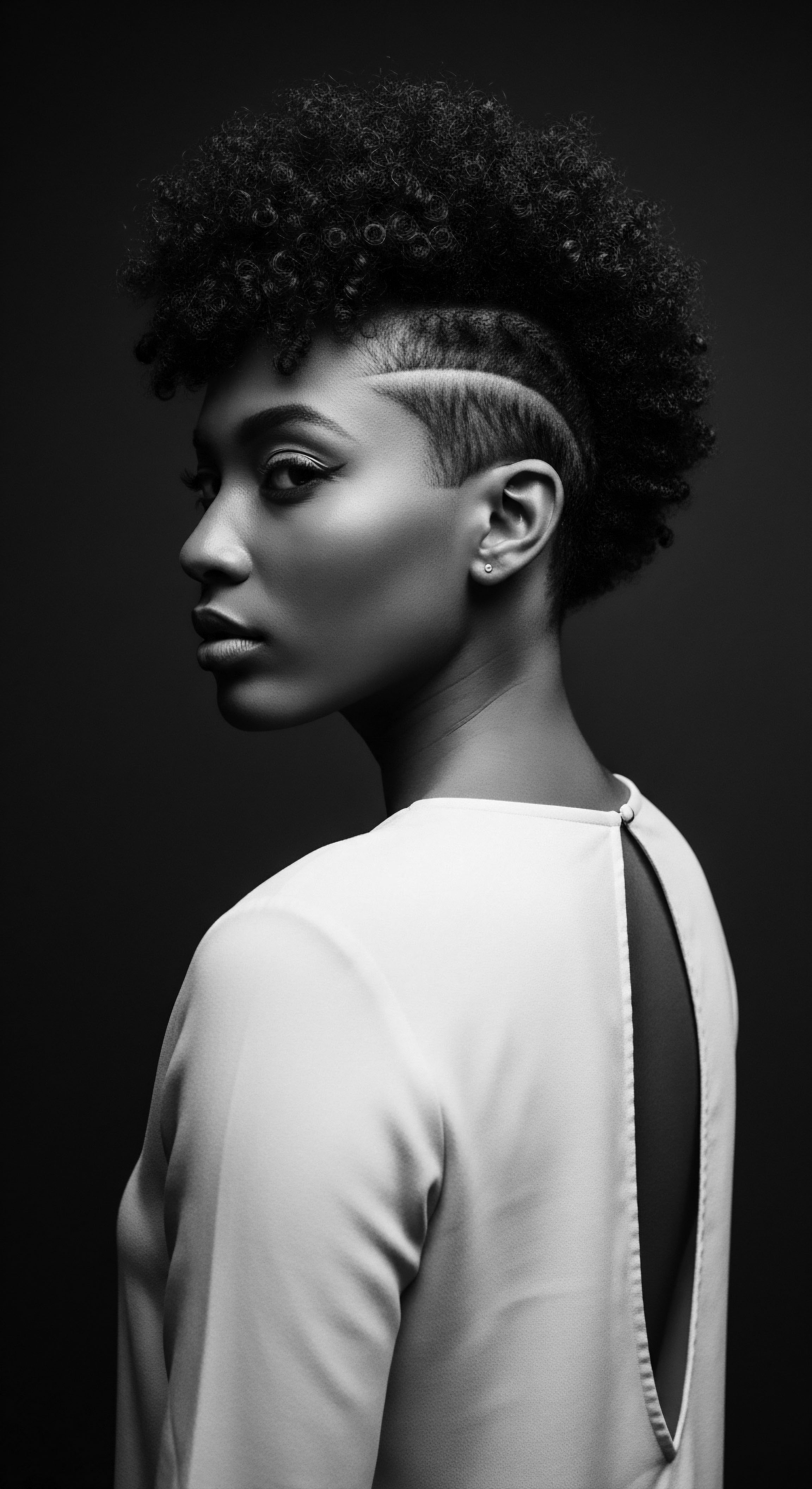
Protective Styling’s Enduring Legacy
Protective hairstyles, from the simplest twists to the most complex braided patterns, are foundational to textured hair heritage. They serve a dual purpose ❉ safeguarding the hair from environmental damage and reducing the need for daily manipulation, which can cause breakage. Oils were the silent partners in these styles, the unsung heroes enabling their effectiveness and longevity.
Consider the sheer genius of weaving rice and seeds into cornrows by enslaved Africans during the transatlantic slave trade. This act, a covert strategy for survival and cultural preservation, relied on the hair being adequately prepared and moisturized to withstand the tension and maintain the integrity of the hidden provisions. The hair, sustained by ancestral oils, became a map, a library, and a larder, allowing for escape and sustenance. Such accounts powerfully underscore the life-sustaining, protective capacity of these styles, inherently supported by the nourishing properties of oils.
- Shea Butter ❉ Often melted or softened, it was applied to strands for moisture and elasticity, making braiding easier and styles more resilient.
- Coconut Oil ❉ Its unique ability to penetrate the hair shaft provided deep conditioning, strengthening hair from within before or during styling.
- Castor Oil ❉ Known for its thick consistency, it provided a dense sealant, especially for edges and scalp massages, promoting a healthy environment for growth.
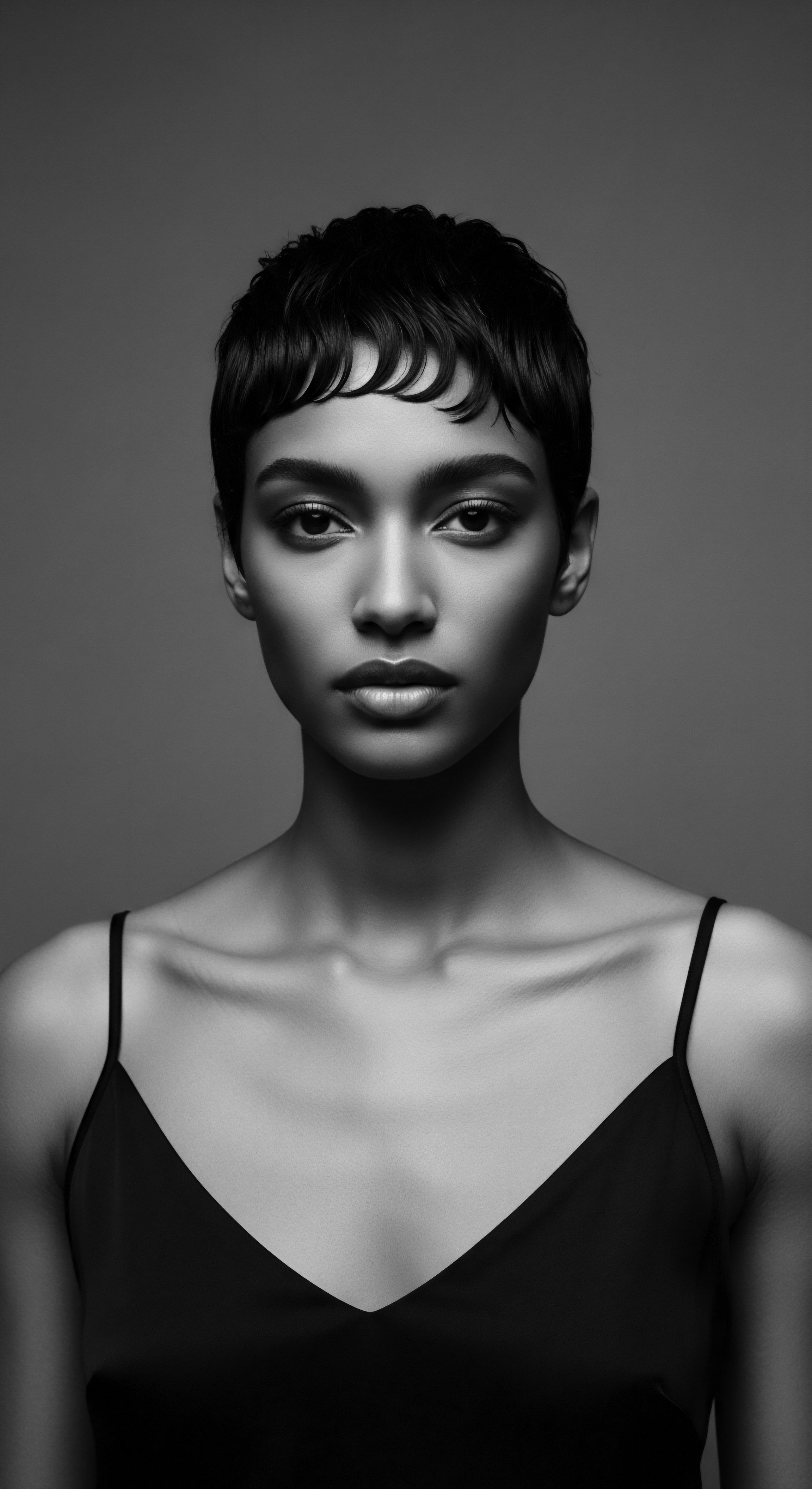
The Science Behind the Shield
Modern science validates much of this ancestral wisdom. The structure of textured hair, with its coils and bends, means that the natural sebum produced by the scalp struggles to travel down the entire length of the hair shaft, leaving the ends particularly vulnerable to dryness. This is where ancestral oils stepped in.
Oils containing fatty acids, like those present in shea butter (linoleic, oleic, stearic, palmitic acids) and coconut oil (lauric acid), create a protective coating around the hair strands. This coating seals in moisture that has been absorbed from water or humectants, effectively preventing its evaporation.
This sealing action reduces friction between individual hair strands and with external elements, which is a common cause of mechanical damage in highly coiled hair. When hair is lubricated with oil, combing and styling—including the creation of protective styles—causes less stress and breakage. The consistent use of such natural emollients over generations significantly contributed to length retention, not necessarily by increasing growth rate, but by preserving the hair that did grow from external damage. This scientific understanding only deepens our appreciation for the intuitive brilliance of ancestral hair care practices.
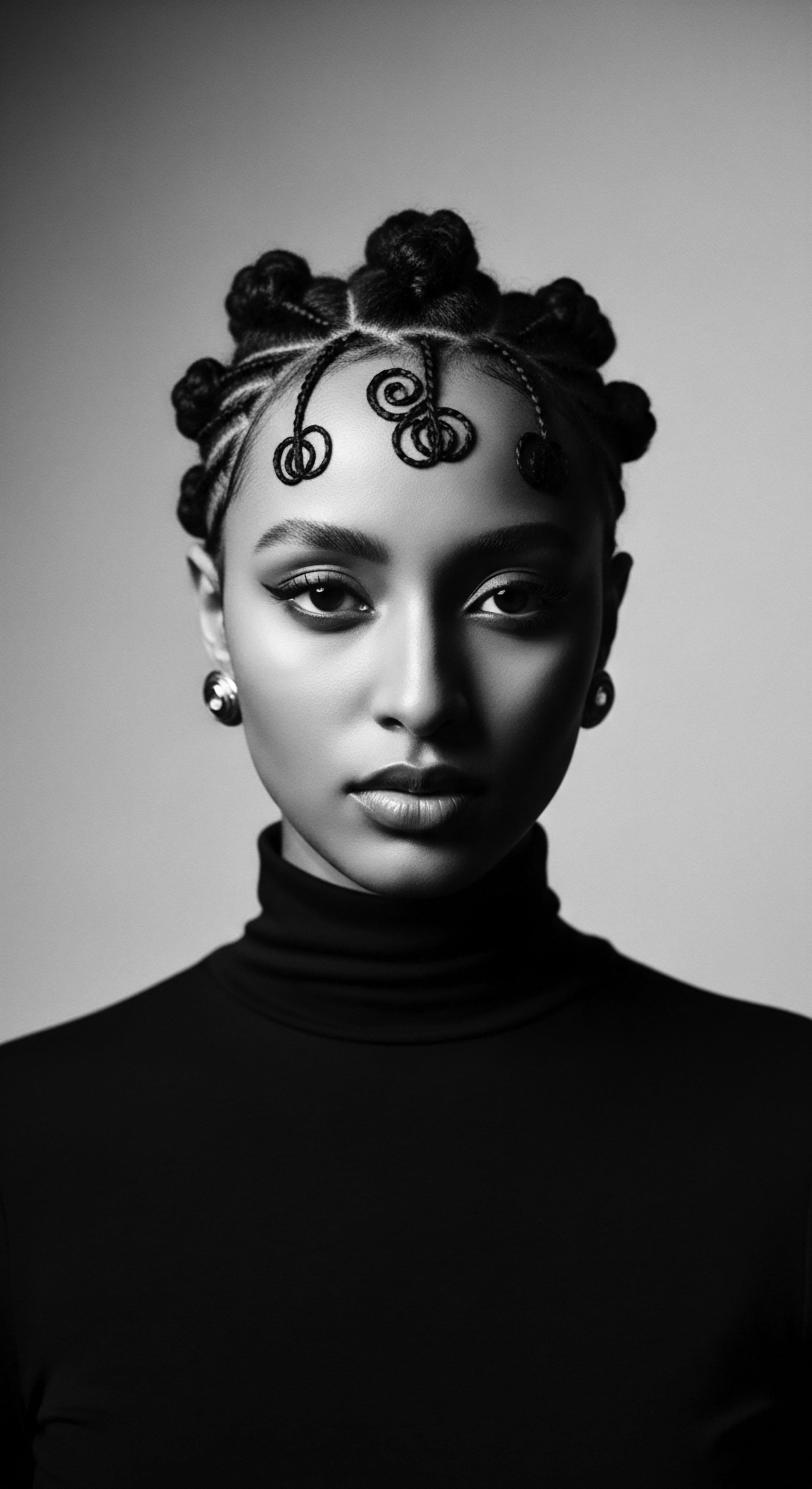
Relay
The journey of ancestral oil use, entwined with protective hairstyles, did not cease with the passage of time or the disruption of diaspora. Instead, this wisdom was relayed, adapted, and fiercely held, becoming a quiet act of resistance and cultural continuity. Through generations, despite immense pressures to conform to other beauty ideals, the practices persisted, transformed, and found new expressions, always carrying the deep resonance of heritage.

Passing Down the Living Lore
The transatlantic slave trade presented an unprecedented assault on the identity and cultural practices of African peoples. One of the first acts of dehumanization was the forced shaving of heads, stripping individuals of their hair, a profound symbol of identity and cultural ties. Removed from their homelands, often without traditional tools or ingredients, enslaved Africans were compelled to adapt their hair care practices.
Yet, even in the harshest conditions, the legacy of hair care endured. They found ways to maintain traditions and express identity through hair, using braiding techniques that incorporated symbols of their African heritage.
The resilience of these practices speaks volumes. As observed in many historical accounts, mothers and grandmothers, even under duress, passed down the knowledge of hair care rituals to their daughters and granddaughters. These were intimate moments, often held in hushed tones, away from the gaze of enslavers, ensuring that the wisdom of oils, braids, and hair’s profound meaning was not lost.
The use of various natural oils and butters, even if improvised with local alternatives, continued to be a cornerstone for protective styles, providing moisture and pliability in challenging environments. This steadfast dedication preserved a vital connection to their past and laid the groundwork for future generations to rediscover and celebrate their textured hair.
Consider the case of Chebe powder from Chad, often used in conjunction with a mixture of raw oil or animal fat. This traditional practice of the Basara Tribe of T’Chad, documented by anthropological studies from the University of Cairo, has allowed women to maintain remarkable hair length despite severe desert conditions. The mixture is applied and then hair is braided, demonstrating a long-standing understanding of sealing moisture and minimizing manipulation for length retention.
This ancestral method persisted for centuries without external validation or commercialization, purely because it works. It offers a powerful example of how deep, localized knowledge was, and remains, a reliable source of hair care efficacy.

Modern Science Meets Ancestral Ingenuity
Contemporary hair science offers compelling explanations for the efficacy of these time-honored practices. Textured hair, particularly Type 4 coils, is inherently more prone to dryness and breakage due to its coiled structure, which hinders the natural distribution of scalp oils. Studies show that Type 4 hair is about 70% more susceptible to breakage and shrinkage, underscoring its need for hydration. Oils address this by acting as effective sealants, locking in moisture and providing a protective layer.
The fatty acids found in ancestral oils are key players here. For instance, coconut oil possesses lauric acid, a small molecule that can penetrate the hair shaft, reducing protein loss. This strengthening from within complements the external sealing action, offering a dual layer of protection crucial for maintaining the integrity of hair in protective styles.
Shea butter , rich in linoleic, oleic, stearic, and palmitic acids, seals moisture onto the hair strands, increasing shine and reducing frizz. These actions directly support the mechanical resilience of hair, making it less likely to break during styling or environmental exposure.
| Oil Shea Butter |
| Traditional Application in Protective Styles Applied to soften hair for braiding, seal moisture in twists, reduce scalp dryness. |
| Scientific Mechanism of Support Forms a protective coating, locking in moisture and reducing frizz; rich in fatty acids (linoleic, oleic, stearic) and vitamins (A, E) that nourish and protect. |
| Oil Coconut Oil |
| Traditional Application in Protective Styles Used as a pre-shampoo treatment, for general lubrication, and to condition strands within braids. |
| Scientific Mechanism of Support Lauric acid penetrates the hair shaft, reducing protein loss and strengthening hair; also provides antibacterial activity for scalp health. |
| Oil Red Palm Oil |
| Traditional Application in Protective Styles Applied for shine and moisture, particularly in West and Central African protective styles. |
| Scientific Mechanism of Support High in beta-carotene and antioxidants, protecting hair from environmental damage and adding shine; supports overall vitality. |
| Oil Castor Oil |
| Traditional Application in Protective Styles Used for scalp massages and sealing ends in twists and locs. |
| Scientific Mechanism of Support Ricinus communis is known to enhance scalp circulation and possess antimicrobial properties, fostering a healthy growth environment. |
| Oil The enduring utility of these ancestral oils finds compelling validation in contemporary scientific understanding, bridging the wisdom of the past with the insights of the present. |

Cultural Evolution and Identity
The Natural Hair Movement of the 1960s and 70s, reborn in the early 2000s, profoundly reshaped perceptions of textured hair. It marked a powerful rejection of Eurocentric beauty standards and a conscious decision to embrace natural curls, coils, and kinks. This era witnessed a resurgence of traditional protective styles and a renewed appreciation for ancestral ingredients like shea butter and coconut oil.
Jojoba oil, though originating in indigenous American cultures, gained significance in African American communities for its ability to mimic natural sebum, addressing dryness and breakage, and aligning with traditional nourishing care. The choice to use such oils became an act of self-love and a statement of cultural pride.
This modern rediscovery of ancestral oil use, therefore, is not merely a trend. It stands as a powerful continuation of a living heritage, a tangible link to the resilience and resourcefulness of those who came before. It represents a collective decision to honor the unique qualities of textured hair, recognizing that the solutions for its care were often found within the natural world, cultivated and passed down through generations.
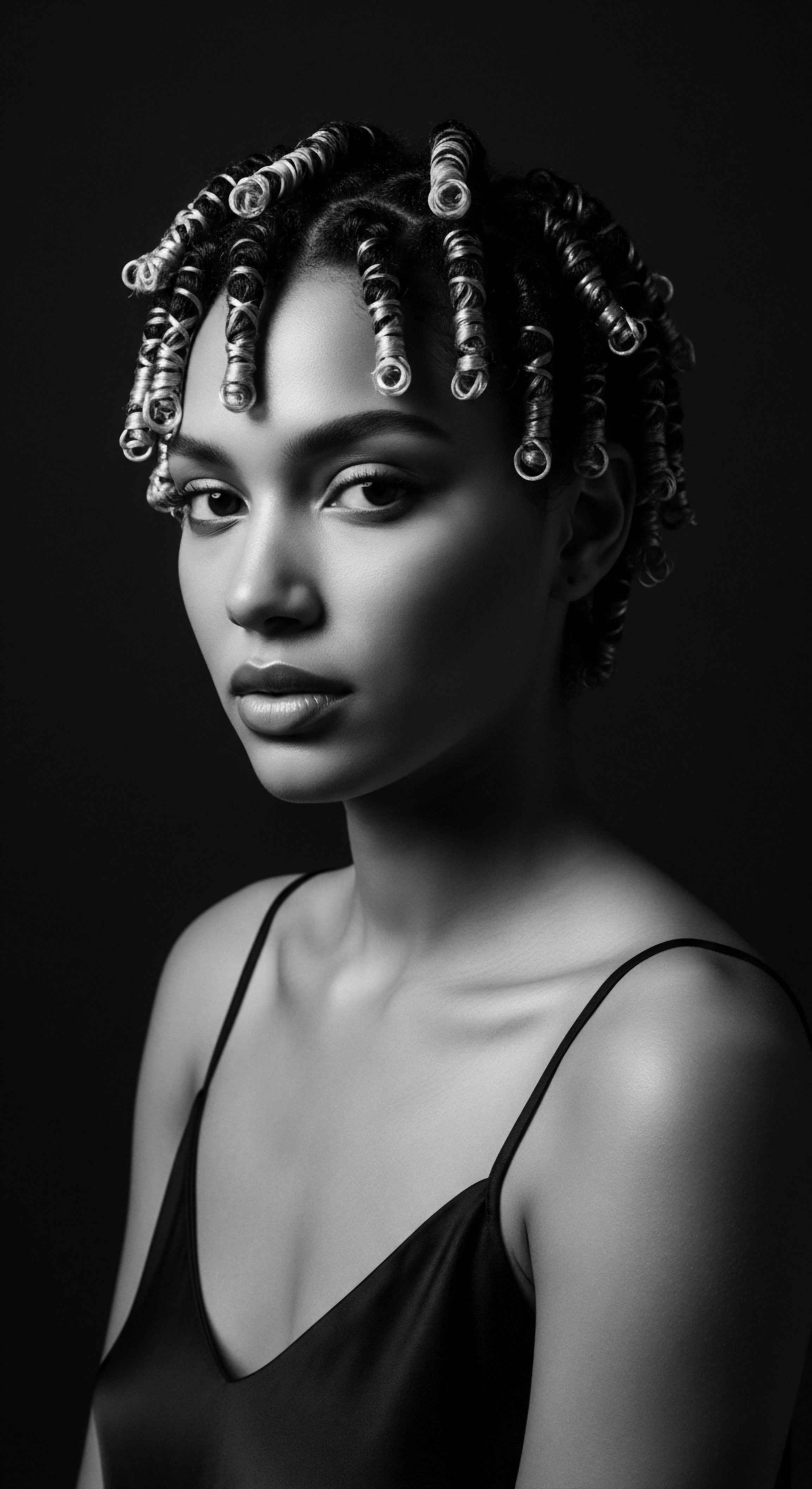
Reflection
The strands that crown our heads hold more than just their biological makeup; they carry the echoes of countless generations, a profound testament to survival, creativity, and identity. The use of ancestral oils in conjunction with protective hairstyles for textured hair is not a historical footnote; it is a vibrant, continuing story. It speaks to an intuitive understanding of the natural world, a deep connection to the body, and the unbreakable spirit of a people.
In every application of oil, in every careful twist and braid, we participate in a legacy that stretches back to ancient lands and resilient hands. This wisdom, born from necessity and refined over millennia, reminds us that true care is holistic, encompassing not just the physical strand, but the spirit it embodies and the heritage it represents. Our textured hair, in its myriad forms, remains an unbound helix—ever unfolding, ever adapting, yet always rooted in the profound wisdom of its past.

References
- Hair Care Practices from the Diaspora ❉ A Look at Africa, America, and Europe. (2025, January 23).
- The history of Afro hair – Nuevo Noir. (2024, March 16).
- African Beauty and Skincare ❉ A Deep Dive into History, Traditions, and Natural Ingredients. (2025, January 16).
- 5 ways shea butter helps curly hair – Holy Curls. (2021, October 21).
- Koshe Delight West African Red Palm Oil 2L | Unrefined, Vegan, Non-GMO, Gluten-Free | Cooking & Skincare.
- No raw oils and butters vs. Traditional African hair care? ❉ r/Naturalhair – Reddit. (2021, August 26).
- Historical Perspectives on Hair Care and Common Styling Practices in Black Women. (2025, March 4).
- What Every Dermatologist Must Know About the History of Black Hair. (2023, November 30).
- Hair Science ❉ The Chemistry of Natural Hair Oils and Their Nutrients – Hair by Clare. (2023, November 8).
- Protect Your Tresses ❉ The Importance of Protective Hairstyles | Davines.
- Shea butter for hair ❉ Key benefits and effective uses. (2025, April 5).
- Contemporary African-American Hair Care Practices. (2015, May 12).
- Protective hairstyle – Wikipedia.
- Red Palm Oil & Palm Kernel Oil – For Hair Care & Skin Care – New Directions Aromatics. (2017, October 5).
- Koshe Delight Native West African Red Palm Oil – AfricanNatural.
- The Untold Story of Jojoba Oil in Black Beauty | BeautyMatter. (2025, February 4).
- The History of Black Hairstyles – Flora & Curl.
- Got it from my momma ❉ Celebrating Hair Traditions Passed Down Through Black Culture. (2024, October 16).
- Red Palm Oil ❉ A Complete Guide to Africa’s Bold and Nutrient-Rich Oil – PalmOil Pathway. (2025, January 19).
- Can Oils Make Your Hair Grow Better? A Guide for Women with Type 4 Afro-Textured Hair. (2025, January 26).
- Hair Oils ❉ Indigenous Knowledge Revisited – PMC.
- The Forgotten Wisdom of Chebe & Qasil ❉ What Modern Hair Care Is Missing – WholEmollient. (2025, March 13).
- The Resilient Tresses ❉ West African Black Hair History from the 1400s to Today #63. (2024, March 1).
